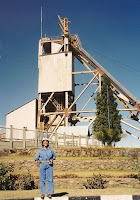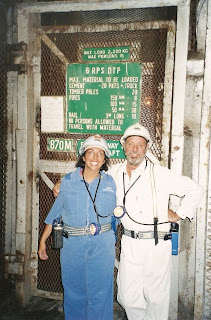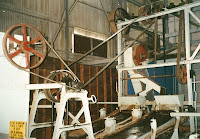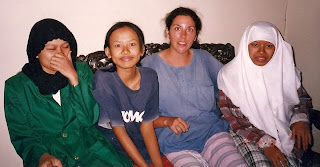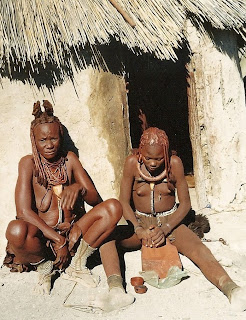
Namibia, which is just north and towards the west of South Africa, had some of the most interesting tribes and spectacular natural sites to see. If you do not mind long car rides and sleeping on the ground inside a tent, then Namibia should be on your list of must see countries.
One particularly notable tribe is the Himba tribe. The members of this tribe live in a homestead that is "gated" by tree branches. All of the mud huts are within the circular gate. The tribe breeds cows and goats. All parts of these animals are used in some shape or form. For example, the walls of the mud huts are actually made of cow manure.



The children wear special jewelry and hairstyles. Both of these tell the age of the child. An infant has his/her head completely shaved and he/she wears a beaded necklace. As the infant grows older, the number of hair braids in front and back gives away the child's age. The type and design of the necklace and bracelets tell the age and family of the child. Since cows and goats are very important to the sustainability of the Himba people, the children must from an early age learn to tend to them. Therefore, the children are often given the responsibility of learning to care for the small goats at first. Watching a 5 year old take his kid to graze is a sight to be seen.

On the day that I visited, the entire Himba homestead was having a celebration. The women were dancing. The men were sitting around watching. There was a big slab of meat on a fire. There was also what looked like a skinned animal up high in a tree. The dead animal is placed in the tree so that no other animals will get to it and eat it. This allows them to eat the meat at a slightly later time. Honestly, I could not imagine eating this meat. Without refrigeration it looked rancid. Their stomachs must be used to eating older meat that has been sitting in the sun.

In order to gain entry to this homestead our group of 9 brought a gift. I believe we brought a big sack of rice as well as something else that would be useful for all. These items were given by our tour guide to the Himba tribe leader, who is sitting in the chair on the right. The leader must approve before we can visit. Once the leader approved, we were permitted to enter the gated homestead. After we walked around for a little while, the leader formally met us in front of the entire tribe. What was shocking was that he then asked for money to buy alcohol for the celebration. Our whole group was flabbergasted. We did not know what to do. We were being put on the spot and I was looking for our guide to jump in. If more of a gift was needed, our guide should have known to bring it. Our guide did nothing. Each group member including myself handed over a very small sum of money. This last interaction really tainted our experience.
That night we slept in tents outside of the homestead. The next day our group was invited back into the homestead. We collectively decided to skip our second visit. Our first visit was not exactly the exchange we had in mind.
